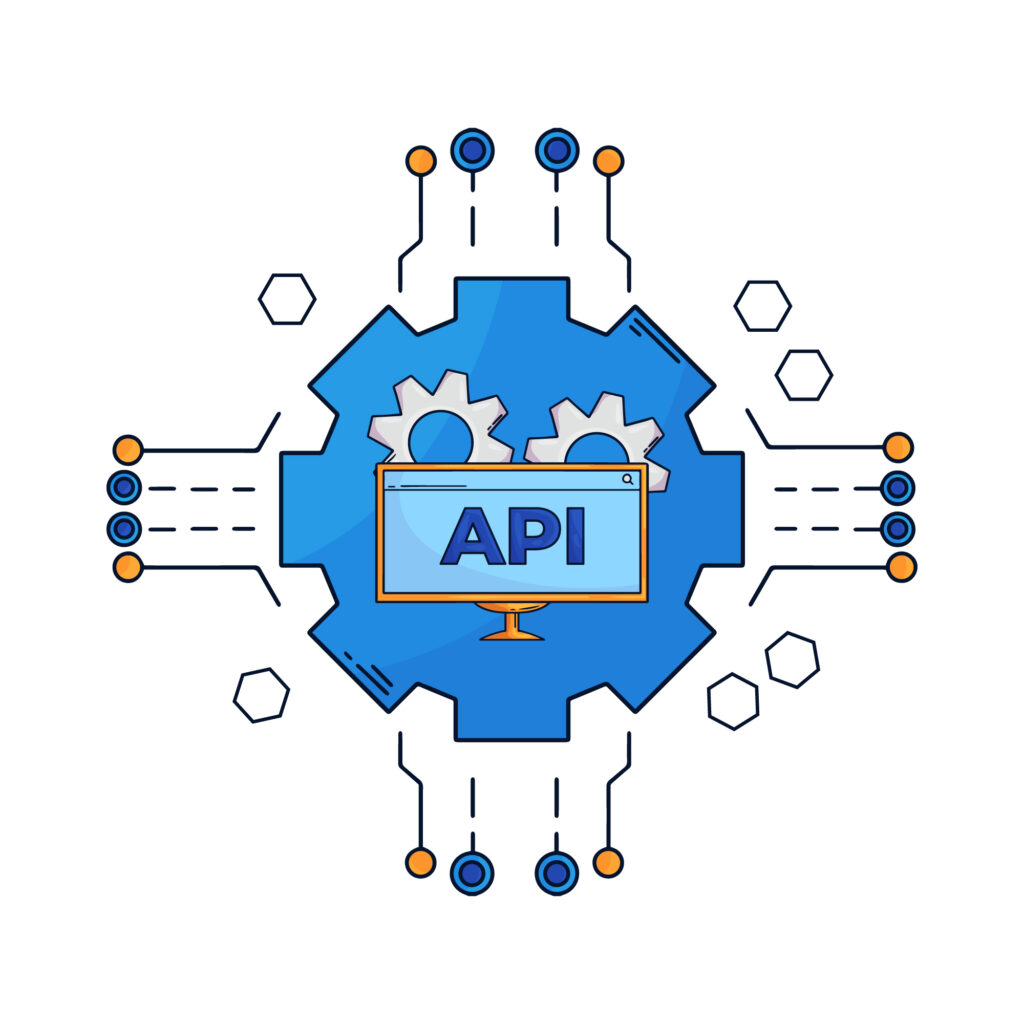Salesforce’s robust API capabilities make it a powerful platform for businesses aiming to integrate their systems with other applications and services. With Salesforce API integration, organizations can achieve seamless data synchronization, automate workflows, and extend the functionality of their CRM. In this guide, we’ll explore how to connect Salesforce with external systems, delve into API types, and walk through the integration process with step-by-step guidance.

Chapter 1: Understanding Salesforce API Integration
What is API Integration?
API integration refers to the process of using Application Programming Interfaces (APIs) to allow different systems to communicate and share data. In the context of Salesforce, API integration allows data to be exchanged between Salesforce and other systems, enabling functionalities like real-time data updates, automation, and a unified view of information.
Why Integrate Salesforce with External Systems?
- Data Synchronization: Ensures that Salesforce and external systems share up-to-date information.
- Process Automation: Automates tasks across platforms, reducing manual work.
- Enhanced Functionality: Extends Salesforce’s capabilities by leveraging third-party tools.
- Improved Efficiency: Streamlines business workflows, reducing redundancies.
Chapter 2: Types of Salesforce APIs for Integration
Salesforce offers a range of APIs for different use cases, each with specific strengths:
REST API
- Purpose: Ideal for lightweight integrations where simplicity is key.
- Functionality: Provides a powerful, web-based interface to access and manipulate Salesforce data.
- Use Cases: Mobile app integrations, web applications, and simple CRUD (Create, Read, Update, Delete) operations.
SOAP API
- Purpose: Suitable for enterprise applications that require robust, secure integrations.
- Functionality: Uses the Simple Object Access Protocol (SOAP), which is more complex than REST but provides better support for structured data.
- Use Cases: Enterprise-level integrations, such as ERP systems and financial platforms.
Bulk API
- Purpose: Optimized for loading large datasets in batches.
- Functionality: Efficiently processes large data volumes, ideal for data migration and data cleansing tasks.
- Use Cases: Bulk data import/export, data migrations, and data syncs.
Streaming API
- Purpose: Real-time data integration for event-driven applications.
- Functionality: Enables clients to receive real-time notifications when records change.
- Use Cases: Real-time stock updates, live customer data monitoring, and event-based applications.
Metadata API
- Purpose: Used for managing Salesforce customizations and configuration changes.
- Functionality: Enables deployment of changes between Salesforce orgs.
- Use Cases: Version control, change management, and custom app deployment.
Chapter 3: Key Considerations Before Integrating with Salesforce
Data Security and Compliance
Ensure that both Salesforce and the external systems comply with data protection regulations like GDPR and HIPAA. Salesforce provides features like field-level security and encrypted data to protect sensitive information.
API Limits and Rate Limits
Salesforce has limits on API usage, defined by the number of API calls allowed per 24-hour period. Consider optimizing API calls and using Bulk API for large data transfers to stay within limits.
Data Mapping and Object Relationships
Plan how data fields in Salesforce map to those in the external system. Use tools like Salesforce’s Data Import Wizard or external ETL (Extract, Transform, Load) tools for initial setup.
Authentication Methods
Salesforce supports OAuth 2.0 for secure API access. Set up OAuth to ensure secure and authorized access to data, especially for REST and SOAP APIs.
Chapter 4: Step-by-Step Salesforce API Integration Guide
Here’s a step-by-step approach to integrating Salesforce with an external system, using REST API as an example.
Setting Up OAuth for Authentication
- Create a Connected App in Salesforce for secure access.
- Configure OAuth Scopes based on the data access needed (e.g., full access or read-only).
- Generate OAuth Tokens that the external system can use to authenticate API calls.
Defining Endpoints and Resources
Identify the endpoints required for the integration:
- Objects and Fields: Define which Salesforce objects (e.g., Accounts, Contacts) will be used.
- CRUD Operations: Specify the actions (Create, Read, Update, Delete) needed for each object.
Making API Requests
- GET Requests: Retrieve data from Salesforce (e.g., list of Accounts).
- POST Requests: Create new records in Salesforce.
- PATCH Requests: Update existing Salesforce records.
- DELETE Requests: Remove records from Salesforce.
Testing the Integration
Use tools like Postman or Salesforce Workbench to test API calls. Verify that the requests are successful and that data flows as expected.
Handling Error Responses
Design error-handling logic to manage common issues, such as:
- Invalid Tokens: Refresh OAuth tokens periodically.
- API Limit Exceeded: Queue requests or retry when limits reset.
- Data Validation Errors: Ensure data meets Salesforce field validation rules.
Chapter 5: Integrating with Common External Systems
Integrating Salesforce with ERP Systems
ERP systems like SAP or Oracle benefit from Salesforce integration, which synchronizes customer data, order management, and financial data.
- Use Case: Syncing customer accounts and sales orders between Salesforce and the ERP.
- Recommended API: SOAP API for structured and secure communication.
Integrating Salesforce with Marketing Platforms
Marketing platforms, such as HubSpot or Mailchimp, benefit from real-time data on leads and contacts.
- Use Case: Automatically update marketing lists in real-time based on Salesforce leads.
- Recommended API: REST API with Streaming API for real-time updates.
Integrating Salesforce with Customer Support Systems
Customer support systems like Zendesk can enhance customer service by sharing ticket and case data with Salesforce.
- Use Case: Viewing customer case history in Salesforce for context during support interactions.
- Recommended API: REST API with Streaming API for instant notifications on ticket updates.
Integrating with Payment Gateways
Integrate Salesforce with payment gateways like Stripe or PayPal for processing customer transactions and managing billing.
- Use Case: Automatically updating payment statuses in Salesforce.
- Recommended API: REST API for real-time data sync.
Chapter 6: Managing Data Flow and Error Handling
Data flow management and error handling are critical for a smooth integration.
Managing Data Conflicts
- Deduplication: Use Salesforce’s Duplicate Management to prevent duplicate records.
- Data Validation: Establish validation rules in Salesforce to ensure data quality.
Error Handling Strategies
- Logging Errors: Keep a log of API errors and review them periodically.
- Retry Logic: Implement retry mechanisms for transient errors.
- Alerting: Set up alerts for repeated errors that require attention.
Chapter 7: Best Practices for Successful Salesforce API Integration
Optimize API Calls
- Use Bulk API for Large Data Transfers: Helps to avoid hitting API limits.
- Limit Data Retrieval: Use SOQL queries to retrieve only necessary fields and records.
Secure Data with OAuth and Encryption
- OAuth 2.0 Authentication: Use secure tokens to manage access.
- Field-Level Encryption: Encrypt sensitive data fields in Salesforce to protect information.

Monitor API Usage and Performance
Regularly monitor API usage and performance metrics to ensure efficient data flow and troubleshoot any issues that arise.
Maintain Documentation and Version Control
Document API endpoints, request/response formats, and integration logic to help maintain and troubleshoot integrations over time.
Chapter 8: Testing and Troubleshooting Your Integration
Functional Testing
Verify that the integration works as expected for each API endpoint and data field. Functional testing ensures that each operation performs correctly.
Performance Testing
Test the system under various load conditions to ensure it can handle peak usage without delays or failures.
Security Testing
Check that data is secure throughout the integration. Test authentication mechanisms and ensure compliance with data protection standards.
Common Troubleshooting Tips
- API Rate Limit Exceeded: Optimize your API calls and switch to Bulk API for high-volume tasks.
- Authentication Errors: Check token expiration and permissions.
- Data Formatting Issues: Ensure field types and data formats align between Salesforce and external systems.
Chapter 9: Monitoring and Maintaining Your Integration
Once your integration is live, monitoring is essential to maintain its stability and performance.
Logging and Monitoring
- API Logs: Review logs for errors and failed requests.
- Monitoring Tools: Use Salesforce and third-party monitoring tools to get real-time insights into integration performance.
Regular Maintenance
Regularly review and update the integration to accommodate any changes in the Salesforce API or external system requirements.
Conclusion
Salesforce API integration with external systems opens doors for enhanced productivity, data accuracy, and seamless workflows. By following best practices, selecting the right API type, and implementing robust error handling, businesses can unlock the full potential of their Salesforce integrations. With careful planning, security considerations, and regular maintenance, your Salesforce API integration can provide a solid foundation for scalable growth and innovation.





























